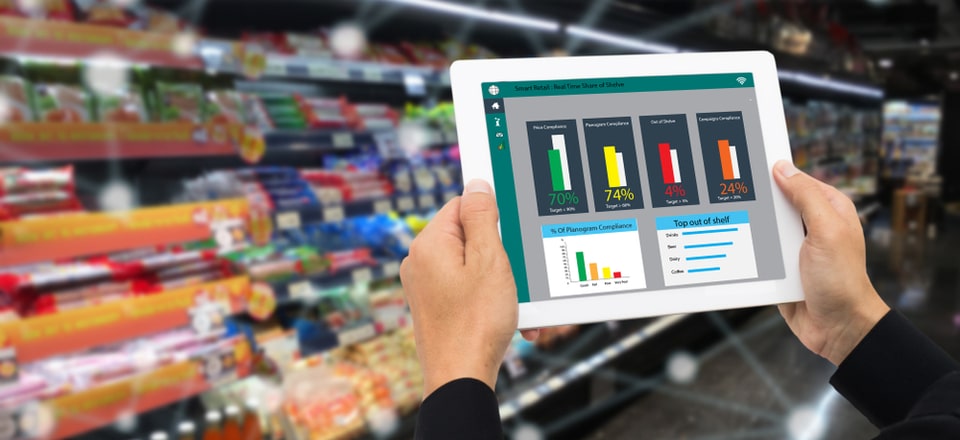The COVID-19 pandemic has brought about a decade of changes to the retail world in just a year and a half or so.
Few retailers can hope to grow, or even survive today, without the ability to sell through ecommerce channels. Supply chains are continually disrupted by container shortages, a lack of air freight capacity, and movement restrictions implemented by governments to combat the pandemic.
Consumer shopping habits have changed exponentially, and lockdown measures continually limit stores’ ability to attract footfall.
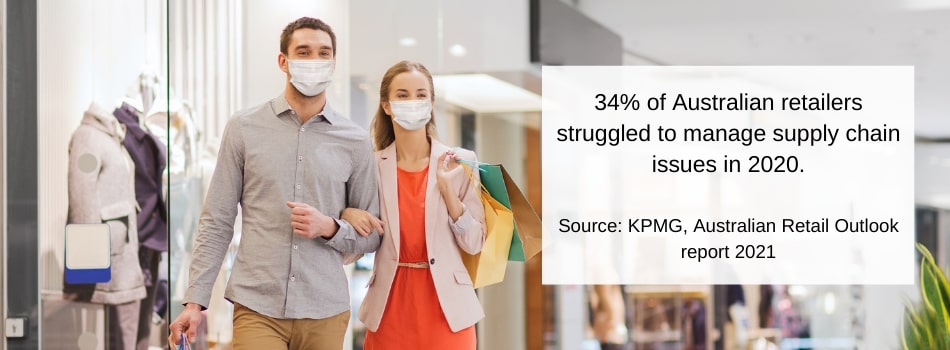
So how have retailers fared in the online and traditional sales environments during all this turmoil? Some have hit on the right strategies and are thriving in the new normal, and others are struggling.
With all that in mind, I thought I’d share some examples of the highs and lows of online and in-store retail that enterprises have endured between late 2019 and early 2021, and highlight some of the most notable changes in the retail supply chain arena during that period.
Target Hitting the Mark With Fulfillment From Stores
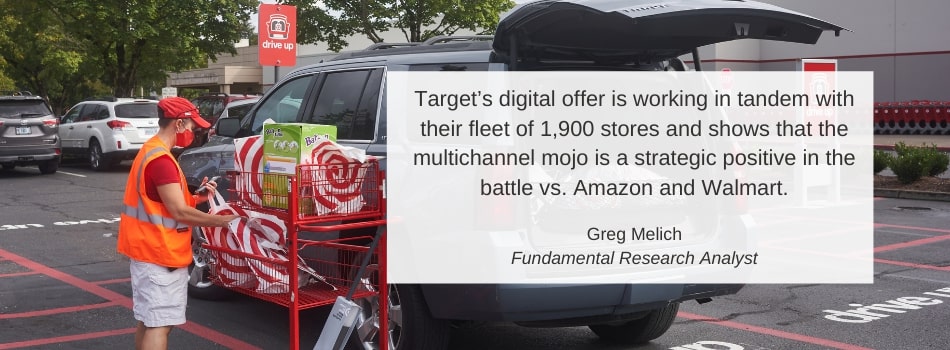
In an article about online retail that I published at the end of 2019, I highlighted Target’s click-and-mortar retail model, which, even then, was positioning the company as an ecommerce trend-setter.
The company continued to expand the concept in the years leading up to the pandemic breakout. Today, 90% of Target’s ecommerce orders are fulfilled from its retail stores.
In 2017, Target acquired Shipt, an on-demand grocery delivery company, establishing it as a grocery and FMCG home delivery partner. Customers can shop online and have their orders shipped from a local Target store to their homes in as little as one hour.
In the second quarter of 2020, the retail chain’s year-on-year ecommerce sales doubled, and its unit costs for online fulfillment reduced by some 30%.
It was perhaps fortuitous that Target began implementing a strategy to focus on fulfillment from stores back in 2019. As a result, it is one of the retailers that has successfully ridden out the COVID-19 storm and wrested sales away from competitors that have had to adapt more hastily, and less efficiently, to the changes brought about by the pandemic.
The Dark Store Trend
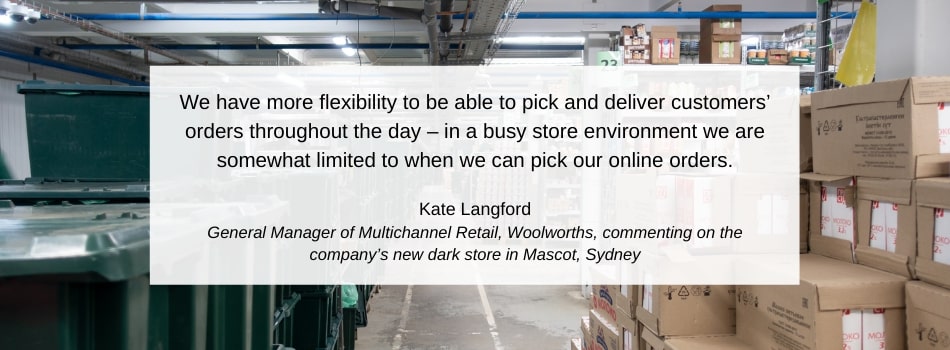
Target’s strategy is just one of many examples of retailers exploiting their brick-and-mortar assets to support ecommerce. In many cases, retail enterprises are going a step further, by turning their stores dark.
The term dark store is one you will increasingly hear used to describe a traditional retail store that’s converted for use as a micro-distribution center. Rather than just adding fulfilment capabilities to a store’s operational scope, adoption of the dark store practice involves the complete closure of a physical sales outlet for conventional shopping activities, and converting the space into a warehouse, with wider aisles, no merchandising flourishes, and more of the cube utilised for holding inventory.
In place of consumers, order-picking staff traverse the aisles, gathering products to fulfil online orders captured from customers. Some retailers even refer to these operatives as personal shoppers.
Instead of the familiar customer checkouts, dark stores house dispatch zones, where customer orders are assembled and configured for last-mile delivery, often performed by crowdsourcing logistics providers or conventional express-delivery companies.
Some dark stores also retain a collection facility, where customers can pick up their purchases after placing them online, instead of receiving them by home-delivery service.
Which Retailers Are Into Dark Stores?
Dark stores are becoming commonplace among independent retailers and big-box chains alike. Notable companies operating them—or planning to do so—include:
- Walmart (USA)
- Tesco (UK)
- Whole Foods (USA)
- Kroger (USA)
- Giant Eagle (USA)
- Bed, Bath, & Beyond (USA)
- Kendra Scott Jewelry (USA)
- Woolworths (Australia)
- Coles (Australia)
- Kmart (Australia)
For some of the companies listed above, dark stores are nothing new. Walmart and Tesco have experimented with the concept for several years. However, with most countries now undergoing some form of lockdown or policy of movement restrictions to counter the spread of COVID-19, the number of conventional stores going “dark” is increasing rapidly.
New Refinements in Returns Management
With so many more retailers now at various stages of transition to ecommerce, and unification of ecommerce and in-store fulfillment channels, innovators are focusing on new ways to exploit logistics capabilities for customer experience enhancement.
Now it’s not just about selling online and fulfilling from the store. The reverse logistics process, too, is a prime target for refinement.
In 2019, I mentioned the fact that Amazon is a tough act to follow. Today, some retailers have benefitted from working with the retail juggernaut, rather than pursuing ways to compete. Kohl’s, for example, embarked on a partnership with Amazon to handle its customer returns.
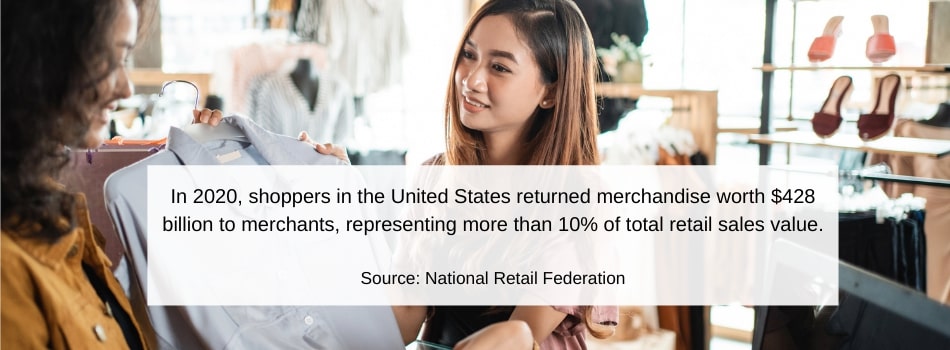
Like Target’s initiative to fulfill from stores, the Amazon/Kohl’s tie-up was initiated before Coronavirus upset the retail world, but the timing could not have been better. Launched in 2017, the facility to return Amazon purchases at Kohl’s stores has gone from strength to strength in line with massive ecommerce-sales hikes brought about by the crisis.
Good for Amazon, Good for Kohl’s
By integrating into Amazon’s reverse supply chain, Kohl’s has seen visits from at least two million new customers at its stores in 2020. The company operates kiosks in its outlets at which Amazon customers can return eligible products without the need for labels or packaging—and at no extra charge.
The symbiotic partnership supports an optimised returns process for Amazon while attracting increased footfall in Kohl’s stores.
Meanwhile, Walmart has gone a step further in managing its ecommerce returns. Its customers can now return products without leaving their homes, due to a curbside pickup arrangement with FedEx.
As product returns continue to increase sharply along with ecommerce sales, reverse logistics is fast becoming a new battleground for retailers seeking to make them less onerous for customers, less costly for themselves, and perhaps even indirectly generate increased revenue.
An Amazon Update
As some retailers seek to work with Amazon, and others to compete, let’s take a moment to look at the retail and logistics tour de force itself.
Was one-day shipping an overstep for Amazon? That was the question I considered in my 2019 article. At that point, there was no sign of the impending Coronavirus catastrophe, and Amazon was seemingly experiencing little more than a teething issue with the transition to one-day shipping.
If anything, the global supply chain disruption caused by the pandemic played more into the hands of Amazon’s competitors than those of the giant itself. I have perhaps made much of the ship-from-store strategy pursued by Target, but its influence is significant.
After all, some of Amazon’s closest competitors differ from the overlord of ecommerce in that their empires comprise expansive networks of physical stores.
By exploiting those outlets as micro-fulfilment centers, Target and Walmart have capitalised on their traditional retail footprint as a competitive advantage over Amazon. Meanwhile, the rise of plug-and-play ecommerce sales and logistics platforms has enabled many other retailers, across every sector, to begin using their stores as direct shipping nodes.
While Amazon has begun to combat this advantage with initiatives such as click-and-collect partnerships with other retailers, its opportunities to place inventory close to customers are more limited than the aforementioned competitors.
Falling Short on the Prime Promise
The pandemic has only compounded Amazon’s issues with its foray into faster deliveries. As the company’s focus shifted to prioritise shipping of goods deemed essentials, Amazon Prime customers began to see delays as long as a month before receiving non-critical items. Essentially, Amazon was reneging on its core Prime promise of one to two-day shipping, for which its customers pay a subscription.
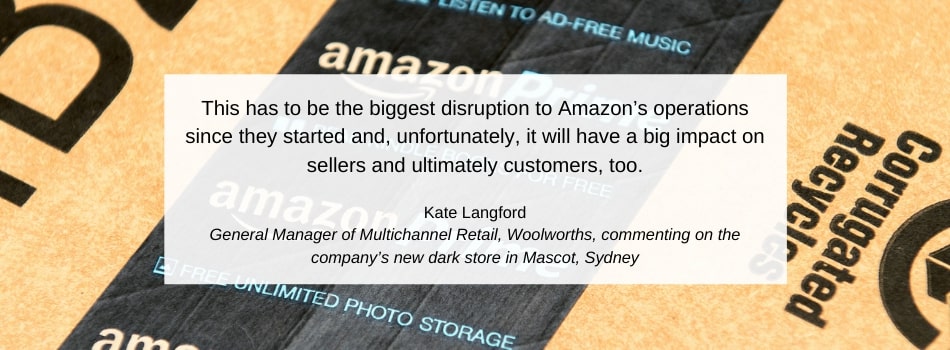
Although the situation is improving in some regions, Prime one-day deliveries are still a long way adrift from pre-pandemic levels. Furthermore, Amazon’s fulfilment costs have continued to rise, hitting a year-on-year increase of more than 45% in 2020. Indeed, in the third quarter of the year, the company’s shipping costs rose faster than its online sales.
That’s not to say that Amazon had a disappointing 2020 overall. Like all online retailers, it benefitted from the pandemic-driven online sales boom. However, as unlikely as the prospect may have appeared a few years back, its seemingly unassailable position was subject to challenge, and some of the pretenders have gained ground amid the turmoil of the COVID crisis.
In-store Retail: Trials and Tribulations, Survival and Solutions
But what about those enterprises, which, despite the global shift to ecommerce, would maintain in-store retail as their core concentration? In short, it won’t be easy, and of course, many small retailers, and some large ones, have already found themselves unable to survive, and have closed their doors for good.
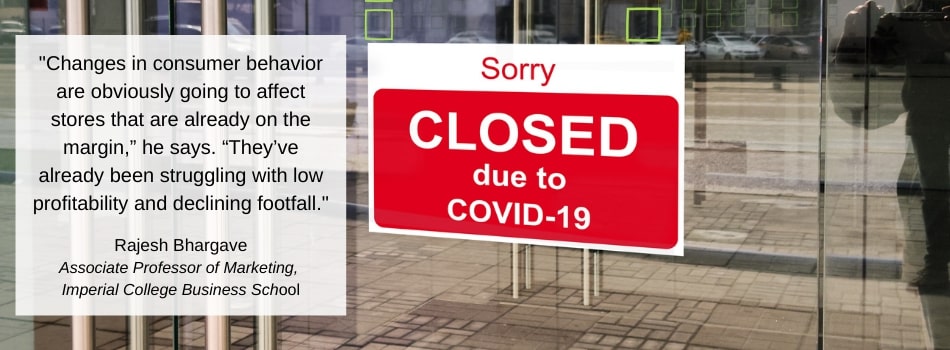
The rest have been forced to change and adapt their supply chains to meet the challenges of business under pandemic conditions, which include:
- A staggering rise in the cost of shipping.
- Substantial decreases in consumer footfall in stores.
- Inadequacy of planning and inventory management solutions, many built on legacy systems ill-equipped to cope with the demands of a tumultuous year or more of supply chain disruption.
- Inbound inventory delays and availability issues arising from global shortages in shipping containers.
The impact of the pandemic’s disruption has been widespread, as shown by the following statistics from Advanced Supply Chain Group:
- 92% of retailers have experienced inventory management issues
- 63% suffered inventory shortages
- 66% experienced delays in stock deliveries
- 33% found significant gaps between logistics planning and execution
Combined with rising logistics costs and reduced in-store revenue, the issues above have forced some retailers out of business. The survivors are companies that made intelligent, timely adjustments to their supply chain and sales strategies.
Just-in-Time Just Doesn’t Work
For example, four in five retailers have changed their approach to inventory management. Many are eschewing the once-popular lean model. Instead, they are broadening warehouse footprints to localise inventory for improved availability to their customers. Only a quarter of sellers believe that just-in-time inventory management is still relevant in the post-COVID environment.
This shift in thinking is evident in any study of the relationship between imports and sales. For instance, in the United States, the rate at which container imports are growing far exceeds that the sales growth rate, indicating a nationwide build-up of inventory.
Times Have Changed and Resilience Matters
Retailers are also amending the timelines across their inbound and outbound supply chains. The proportion of sellers planning for longer inbound lead times is over 40%, while around the same number are extending their timelines for delivery to customers.
Around a third of consumer retail companies, encompassing all categories, are considering the acquisition of cutting-edge digital solutions to improve inventory management and visibility. They see the upgrade from legacy systems as a necessity for bolstering their supply chains with improved resilience.
Risk and Contingency: New Watchwords for Uncertain Times
No end to the current economic uncertainty is yet in sight, and many enterprises were caught unprepared for the flash flood of disruption brought on by COVID-19. As a result, contingency and risk mitigation are high on the list of priorities for those retailers that have managed to keep their doors open for walk-in sales.
Typical risk management initiatives that store operators are taking include:
- Distributing inventory sourcing across a higher number of suppliers
- Increasing overall inventory levels
- Increasing the number of logistics partnerships to spread the risk
- Localising, nearshoring, and reshoring inventory sources
Could a Drug Store Mentality Spread Across Retail Sectors?
Niche retailers are also making efforts to provide shoppers with more reasons to walk into their stores. Along with steps to provide consumers with confidence about minimised risk of COVID exposure, these endeavours include diversifying product ranges to attract and retain custom.
It will be interesting to see if, over time, we start to see fewer niche retailers and an increase in stores selling general merchandise, perhaps with one dominant category.
The pharmaceutical category is one example of such a model that has been in place for years, as the ubiquitous drug store typically provides prescription and over-the-counter medications, but not exclusively so.
In drug stores, medical and healthcare products line aisles shoulder-to-shoulder with everything from cornflakes to candy bars, and any number of other products that would not be out of place in a regular supermarket.
Perhaps the same configuration will become prevalent in stores focused on other categories, such as home improvement or apparel. After all, who hasn’t shopped in a drug store for products with no tangible relevance to a health concern? The desire to increase footfall might well bring operators in other retail sectors to serve consumer needs outside of their niche.
Once More into the Dark Store
This brief appraisal of the situation in conventional retail would not be complete without a further mention of the dark store concept. It’s a practice that merchants can apply at some level in a physical retail environment, as well as ecommerce.
For example, to enable shoppers to enjoy the in-store experience without prolonging risky social interactions (who would ever have thought mingling with shoppers could be a severe health hazard?), a traditional retailer might:
- Reduce the floor area of a store and convert it to more of a showroom
- Use digital technology to allow shoppers to select and pay for products on display
- Have customers’ purchases assembled into orders by pickers in a separate, sealed-off zone
Each order might then be delivered to a curbside collection point, from where the shopper could pick up her purchases without lingering in a checkout queue.
Such a hybrid traditional/dark store model would suit those consumers who hanker after the physical side of shopping. It would also provide the operator with a solution to support conventional and ecommerce retail, with the flexibility to scale either format as required during the post-pandemic evolution of the retail world.
Logistics at the Forefront in Turbulent Times for Retail
Just a couple of years ago, logistics was in the midst of a shift from the back office to the front line of retail service offerings. The COVID-19 pandemic has accelerated that transition and placed the outbound supply chain firmly in the customer’s, as well as the retailer’s focus.
Instead of concerning themselves with the in-store sales experience, shoppers now pay attention to the conveniences retailers can deliver via their logistics networks. They’re asking questions such as:
- Can I buy online and pick up my purchases at my local store?
- How does the retailer protect my health in the course of delivering my purchases?
- What digital options does the retailer provide for me to assess its products before I buy?
- How straightforward is it to return a product that I’m not satisfied with, or that I purchased just to try out?
- How fast can my retailer get my purchases to my home, workplace, or another preferred point of delivery?
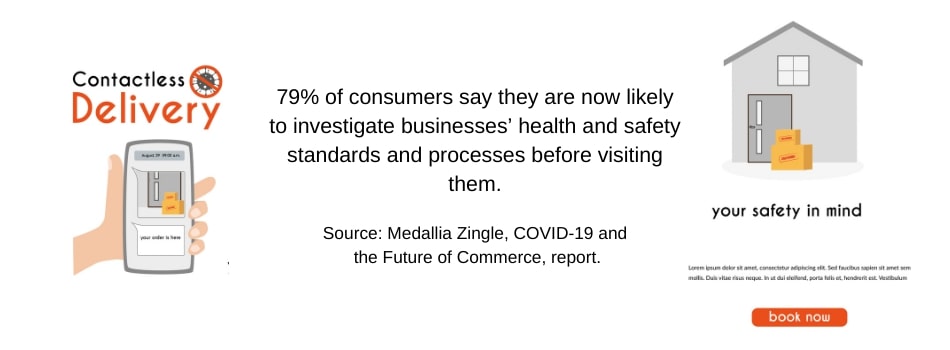
The Coronavirus crisis has triggered a seismic shift in consumer buying behaviour. Even the most technophobic shopper has become inured to online buying. Those who were already adept at interacting with retailers online, have wholeheartedly embraced the increased ecommerce options available to them.
Adapt Your Supply Chain to the New Normal
Fulfilment from stores; dark stores; buy-online-pickup-in-store; click-and-collect; buy-online-return-in-store: These are the trends dominating a retail arena rocked by the pandemic. They are all heavily dependent on efficient supply chains, and they all place logistics under consumer scrutiny.
If your company is to thrive in the massively competitive online retail market in 2021 and beyond, you can’t ignore your logistics strategy’s cost, service, and efficiency impact. If you need a little help to get that right, the team at Logistics Bureau is ready and waiting.
Get in touch with our supply chain consulting team, and let’s see what we can do to boost your profits and set your supply chain up for post-pandemic success.
Editor’s Note: This post was originally published on May 04, 2021, under the title “Retail Supply Chains: The State of Play in 2021” on Logistics Bureau’s website.

